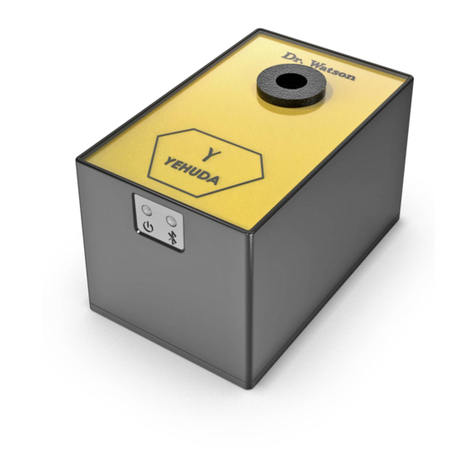
8
Now you can start performing tests with the detector.
You can test mounted diamond jewelry, loose diamonds or loose
diamonds in a plastic bag.
DO NOT TEST DIAMONDS IN A PLASTIC BOX (THE BLUE BOX) OR
COVERED WITH A THICK PLASTIC OR GLASS. If you test diamonds in a
plastic bag- make sure it is thin and clean.
The best way to test loose diamonds is uncovered in a tray or on the
glass base.
In any event –the detector detects only diamonds that it can SEE from
the top. If a diamond is covered by another diamond - it will not be seen.
The same goes for jewelry - only diamonds facing the top camera will
be seen.
If you test a ring or any other jewelry make sure to test it a few times
from all angles and lying flat on the bottom.
Insert the diamond/s or the jewelry piece into the center of the drawer
above the glass square. You can tap on the screen before starting the
test in order to use the autofocus mode.
You can use manual focus by sliding the slider on the bottom of the
screen. When the slider is located around the middle - the focus is on the
bottom of the tray. (Testing loose diamonds)
When the slider is all the way to the right - the focus is on the top of the
drawer. (Testing rings)
You can use the autofocus by taping on the screen or the manual focus
by using the slider.
The detector will remember the focus for your next test.
If you do not tap the screen or move the slider- the focus height will
remain the same for the next test.
When using the autofocus mode the test may take a few seconds longer
than when using the manual focus.
The reason is that with the autofocus mode the camera needs to find the
focus. When using the manual mode, the camera already knows where
the focus is.




























